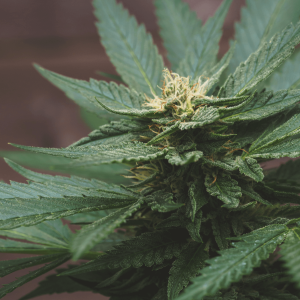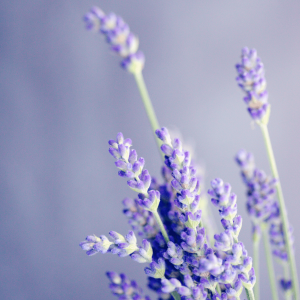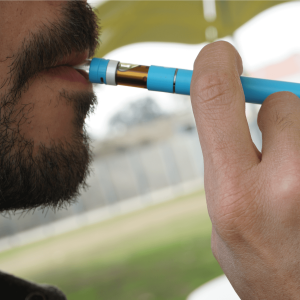We’ve shared a lot of terpene education in the past year, but one topic still remains: Are terpenes safe?
As the cannabis industry continues to shift towards a terpene-focused mindset, very few sources touch on safety. Sure, terpenes play a role in flavor and aromatics. And yes, they help to define your overall experience. But are those factors alone enough to justify safety?
In this blog, we revisit terpenes and take a closer look at the science and safety behind these organic compounds.
What are terpenes & how are they made?
By basic definition, terpenes are ‘any of a large group of volatile unsaturated hydrocarbons found in the essential oils of plants.’ So while we largely touch on terpenes as they pertain to the cannabis plant, they’re found in most plants.

Cultivators often add terpenes to cannabis products, such as cannabis concentrates, or extract and isolate individual terpenes for the purpose of an essential oil.
The process of extracting and isolating those concentrated terpenes is known as terpene isolation. It typically involves using a solvent, such as ethanol or butane, to extract the terpenes from the plant material. The resulting solution is then purified and concentrated to isolate the terpenes and produce the finished product.
Note that terpenes can’t be mixed with water. Instead, they can only be diluted in some sort of carrier oil or concentrate to reduce the strength. In regards to the weed industry, this is typically seen in a cannabis extract or cannabis oil to create higher terpene concentrations.

Examples of cannabis-derived terpenes include limonene, caryophyllene, and humulene. However, the sheer number of terpenes found in other plants, as well, is almost impossible to comprehend.
Eucalyptol, Thymol, Camphor… the list goes on. More than 30,000 other terpenes have been identified by researchers — 200 of which are found in cannabis flower alone.
This is among the many reasons why we aim to emphasize the terpene profile of each strain on our menu.
What are terpene profiles used for?
Terpene profiles refer to the unique combination and concentration percentages of terpenes found in a specific strain of cannabis or other plants. Each strain has a distinct terpene profile, which contributes to its flavor, aroma, and even its potential therapeutic purposes. By analyzing terpene profiles, cannabis connoisseurs can get a better understanding of its potential therapeutic effects and choose specific strains or terpene formulations that are best suited for their needs.
Terpene profiles can also be used to create customized terpene blends with specific flavors and aromas. These Terpene blends are mixtures of two or more terpenes that are combined to create a desired flavor or aroma profile, which are then typically blended with THC extract or other cannabinoids and sold as terpene inhalable’s such as cannabis concentrates or vapes.
Terpene blends can be created using a variety of different aromatic terpenes, each of which undeniably contributes to the aroma and flavor of the cannabis product. Take a blend of limonene and pinene, for example. These botanical terpenes might be used to create a citrusy, piney flavor and aroma, while a terpene formulation of myrcene and linalool could create a musky, somewhat floral scent.
In addition to flavor and aroma, these terpene formulations may also have potential health benefits, especially when all the cannabinoids and terpenes combine to create the entourage effect. Some blends are thought to be particularly effective for reducing stress and anxiety, such as a blend of limonene, caryophyllene, and linalool, while others may be more helpful for relieving pain or even offer anti-inflammatory properties.

Terpenes are Among the Fasting Growing Areas of Interest in Cannabis
As mentioned earlier, we’ve shared a lot of terpene education over the past year, but there’s a method to our madness.
Terpenes are among the fastest-growing areas of interest in cannabis because terpenes enhance so many aspects of a cannabis user’s overall experience with the plant, especially when cannabinoids and terpenes work together.
Terpenes are found in nearly all cannabis products in both low and very high concentrations. From the pure terpenes extracted directly from cannabis plants to the food-grade terpenes found in your favorite edibles for the purpose of oral consumption, cannabis terpenes are only growing in popularity, in part due to the potential health benefits.

What do terpenes do for the body?
Terpenes found in cannabis can interact with the endocannabinoid system, which regulates a variety of physiological processes. Ultimately, terpene interaction with the endocannabinoid system inevitably produces different effects on the body.
For example, some common terpenes, such as myrcene and linalool, have been shown to have sedative effects and can help to promote relaxation and sleep in some consumers. Whereas other terpenes, such as limonene and pinene, have been shown to have energizing and uplifting effects and can help to improve mood and reduce stress.

Some of the most common terpenes found in cannabis include:
Myrcene
Known for its musky, earthy scent, Myrcene is the most common terpene in the cannabis plant and can be found in strains such as RS11. Additionally, it’s believed to have anti-inflammatory and pain-relieving properties.
Limonene
This terpene has a citrusy aroma and is thought to have mood-enhancing, anti-anxiety, and neuroprotective effects. Limonene, when combined with myrcene and caryophyllene, is also known to produce a euphoric sensation.
Pinene
As the name suggests, pinene has a scent similar to that of pine needles and is believed to have anti-inflammatory and antibacterial properties.
Linalool
With a floral, lavender-like scent, linalool is thought to have calming and anti-anxiety effects that are perfect for nighttime use.
Caryophyllene
Known for its spicy, peppery aroma and flavor, caryophyllene is known to help relieve anxiety as well as reduce inflammation and pain. This particular terpene is found in many cannabis strains, including Rainbow Belts and Pink Runtz.
Humulene
This terpene is best known for its supremely therapeutic effects, and when combined with other compounds, can work synergistically to enhance their potential health benefits. Additionally, humulene is commonly used as an appetite suppressant and is praised for its anti-inflammatory and antibacterial properties.
Do terpenes affect the body?
Given that terpenes are a trending topic in the cannabis community, new studies have been performed in order to better understand their safety in cannabis products.
Though terpenes are deemed generally safe, the results of these studies have shown that cannabis terpenes have both positive and negative effects on the body, especially depending on the consumption method.
Are terpenes good for you?
Terpenes offer a multitude of health benefits ranging from antifungal and anticancer properties to relief from conditions such as anxiety, stress, and depression. With that being said, terpenes are considered generally healthy.
However, some cannabis users may experience adverse reactions, especially from consuming terpenes in high concentrations.
Can terpenes be dangerous?
Though terpenes are not considered to be dangerous, there are instances in which terpenes have shown some toxicity. For example, the toxicant formation in dabbing.
Dabbing involves the inhalation of vaporized cannabis concentrates, which contain concentrated terpenes.
Terpenes are generally considered to be safe, but they can potentially form toxic byproducts when heated to high temperatures. When heated to high temperatures, terpenes undergo a process called pyrolysis. This can lead to the formation of toxic compounds such as benzene, toluene, and styrene.
These compounds are known to be carcinogenic and can have harmful effects on the respiratory system. This can ultimately lead to oxidative damage.

To avoid risking toxicant formation, we highly encourage every stoner to use lower temperatures and ensure proper ventilation when dabbing.
Additionally, it’s especially important to use high-quality concentrates that have been properly processed and tested for purity and contaminants. In other words, stick to the legal market for all cannabis products.

What are the negative effects of terpenes?
Some of the potential negative effects of terpenes include:
1. Allergic reactions:
Some people may be allergic to certain terpenes and can experience symptoms such as skin irritation, a rash from cannabis topicals, or even respiratory problems. This is due to oxidative damage and toxicant formation.
2. Irritation of the eyes, throat, and lungs:
Many terpenes can irritate the mucus membranes of the eyes, throat, and lungs, especially when consumed in high concentrations.
3. Headaches and dizziness:
Some terpenes may cause headaches and dizziness in individuals sensitive to scent exposure. If you find yourself experiencing migraine headaches from perfume application, you may be more likely to experience a headache from concentrated terpenes.
4. Nausea and vomiting:
Some terpenes, such as pinene and limonene, can cause nausea and vomiting in some people. However, other individuals praise limonene for its ability to relieve symptoms of nausea. That said, it’s important to have a clear understanding of your terpene tolerance.
5. Interactions with medications:
Some terpenes can interact with medications, particularly those metabolized by the liver, which may affect the effectiveness of the medication.
It’s important to note that these negative effects are generally rare and occur primarily in individuals who are known to be sensitive to terpenes or consume them in direct or excessive amounts.
Most people can safely consume terpenes without experiencing any adverse effects, but it’s important to seek guidance from organizations like the International Fragrance Association if any concerns arise.
Avoid Inhaling Concentrated Terpenes Directly
Terpenes are often found in cannabis vape products with the intention of inhalation. However, it’s important to note that vape products are created by infusing terpenes into cannabis oil, meaning that the terpenes are diluted.
In other words, inhaling a vape product is not the same as inhaling an essential oil, for example, and therefore presents little to no danger.

Inhaling highly concentrated terpenes, such as essential oils, does prove to be dangerous and can easily lead to the negative side effects of terpenes that were mentioned above. However, it’s widely understood that terpenes are safe.
FAQs
1. How are terpenes produced?
Terpenes are naturally produced, organic compounds found within plants. The production of terpenes in plants is influenced by a variety of factors such as environmental conditions, genetics, and even developmental stages.
Cannabis plants may produce different terpenes depending on factors such as temperature, humidity, light cycle, and nutrient availability; ultimately resulting in terpene profile differences between strains.
2. What do terpenes do for your high?
Terpenes play a significant role in defining a cannabis user’s overall high.
Not only do terpenes influence the flavor and aroma of a specific strain depending on its individual terpene profile, but they also potentially offer therapeutic and health benefits when interacting with other compounds, such as cannabinoids, within the cannabis plant.
It’s important to note that the effects of terpenes can vary depending on an individual’s genetics as well as the specific strain of cannabis consumed.
The effects of terpenes are still being studied. More research is needed to fully understand their interactions with other compounds in cannabis and their potential medicinal and therapeutic uses.
3. How many natural terpenes are there?
There are more than 30,000 other terpenes that have been identified by researchers. Examples include borneol, terpinolene, nerolidol, and ocimene. In regards to the cannabis plant specifically, 200 natural terpenes have been identified, each with specific effects, aromas, and flavors.
4. How do you extract terpenes from leaves?
Terpenes can be extracted from cannabis leaves using a variety of methods, including steam distillation, solvent extraction, and mechanical extraction. The method of extraction can affect the quality and purity of the terpenes.
5. What does a high terpene percentage mean?
In general, a high terpene percentage often means that the specific strain contains a higher concentration of various terpenes. A high terpene percentage can indicate stronger therapeutic effects or a more intense experience in regards to flavor and aroma.
However, it’s important to note that terpene percentages alone don’t necessarily indicate the quality or potency of a cannabis strain. It’s important to look at other cannabinoids within a strain, such as THC and CBD, for a better understanding of the effects.
6. Can you inhale terpenes?
Terpenes can be inhaled, but it’s important to proceed with caution and use them in a safe and appropriate manner. Inhaling terpenes directly or in high concentrations can be irritating to the respiratory system. This may cause coughing, shortness of breath, or other negative effects.
7. What is the difference between terpenes and terpenoids?
While often used interchangeably, terpenoids are the larger class of organic compounds that include the terpenes we all know and love, but also modified derivatives of them and even cannabinoids.
8. How to use Left Coast Extracts syringe?
Left Coast Extracts is a cannabis company owned by Coltin Barody and Alexandria Kometas. Their distillate syringes are an excellent example of a terpene-heavy cannabis product that allows users to refill their Left Coast Extracts pods.
To use, simply remove the white mouthpiece. Then insert the syringe into one of the two side holes (not the center hole). Once the pod has been refilled, you’re good to go!

 Rewards
Rewards





